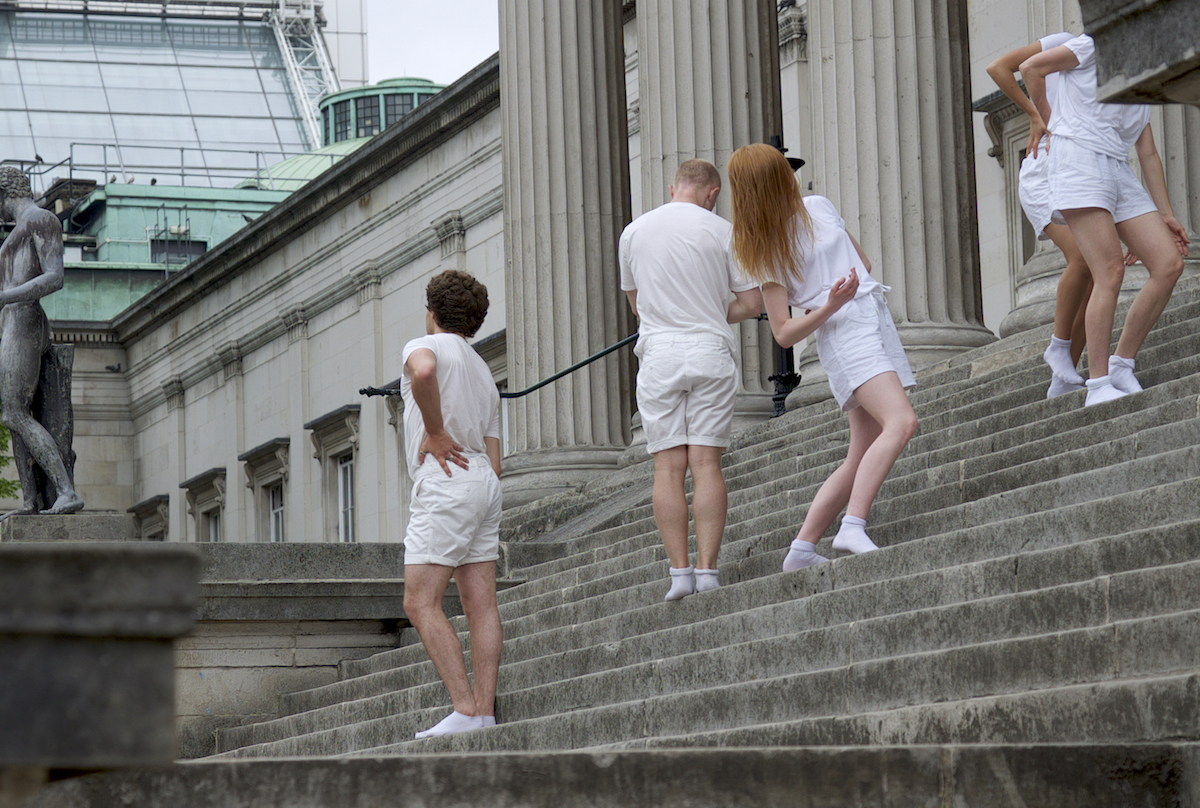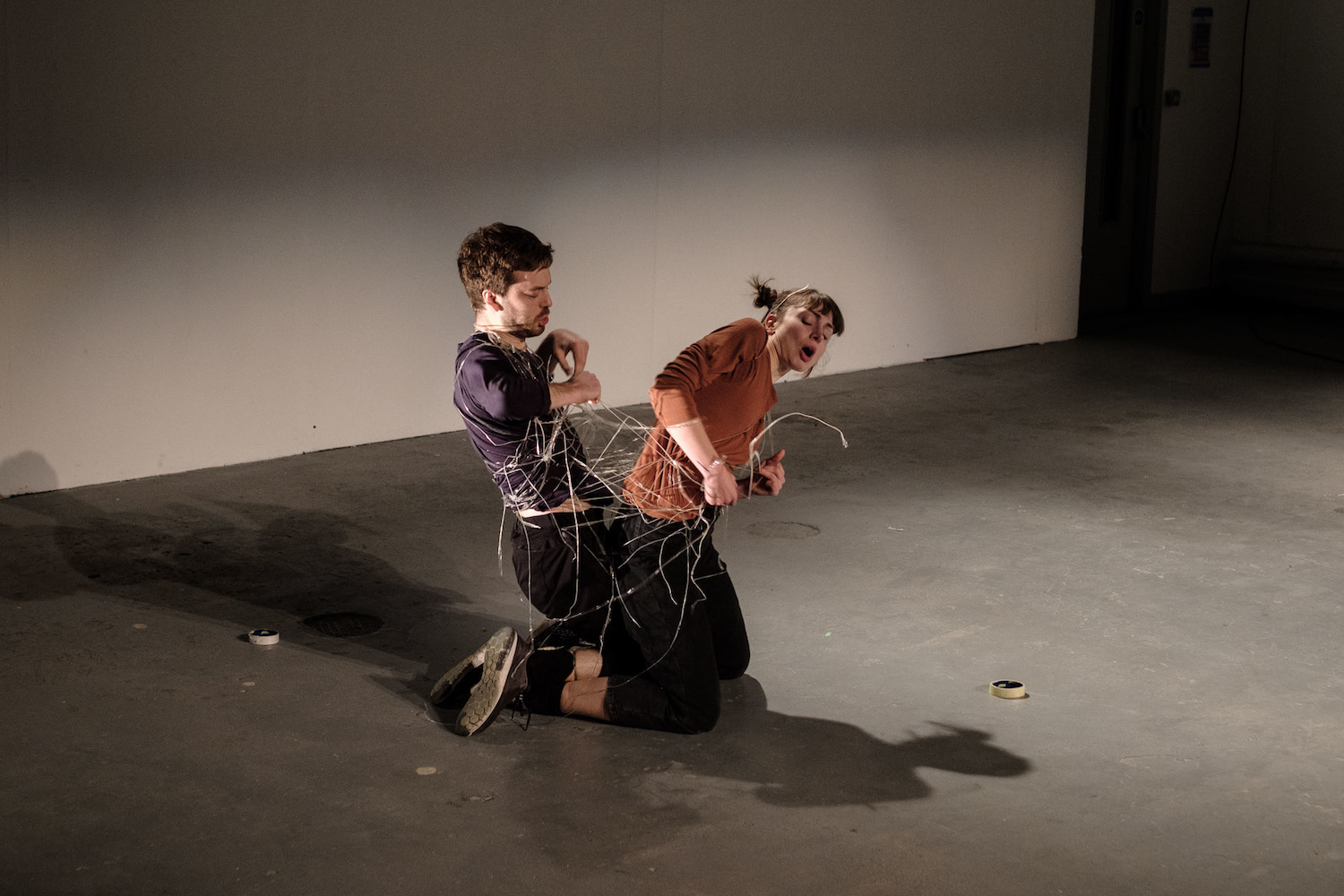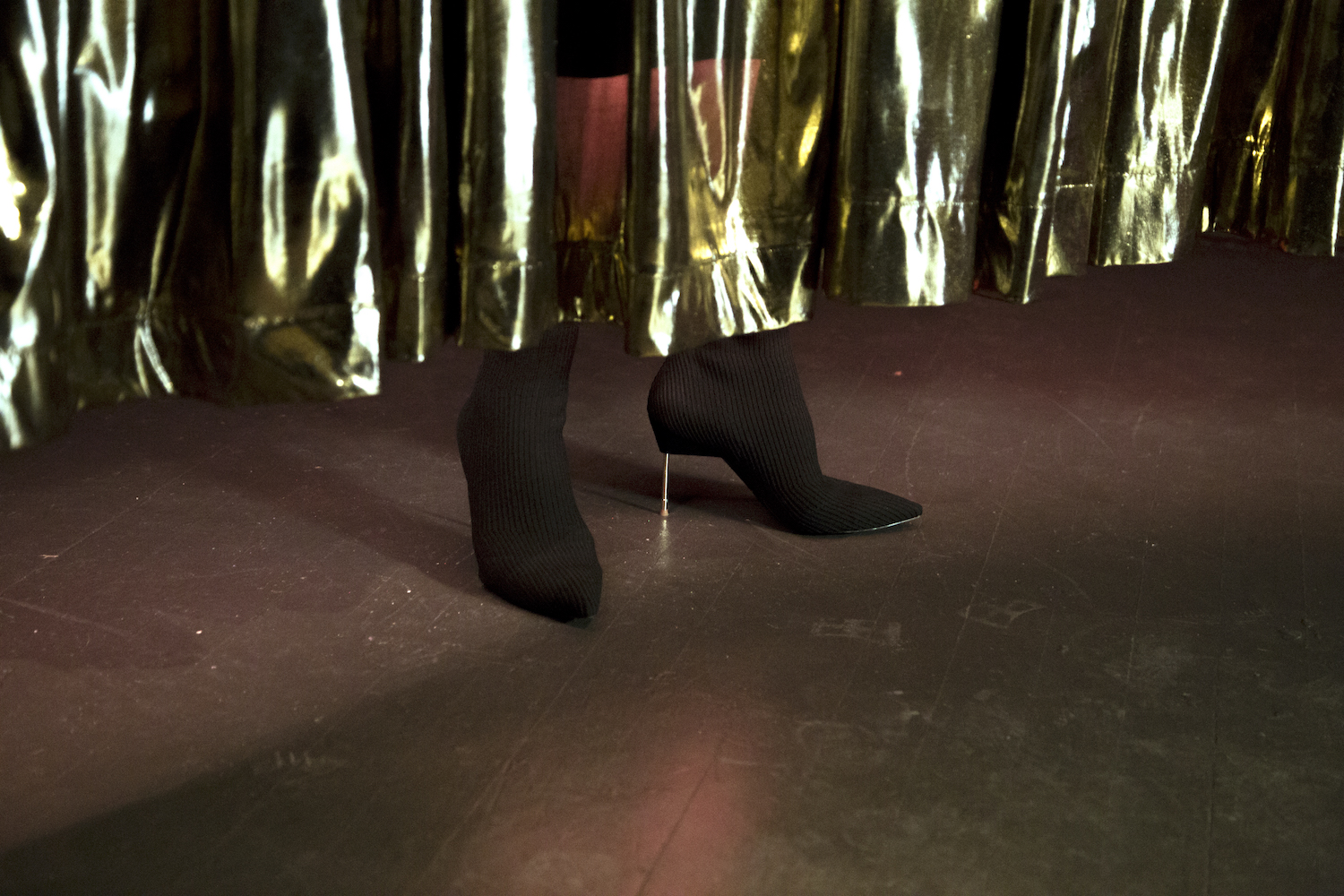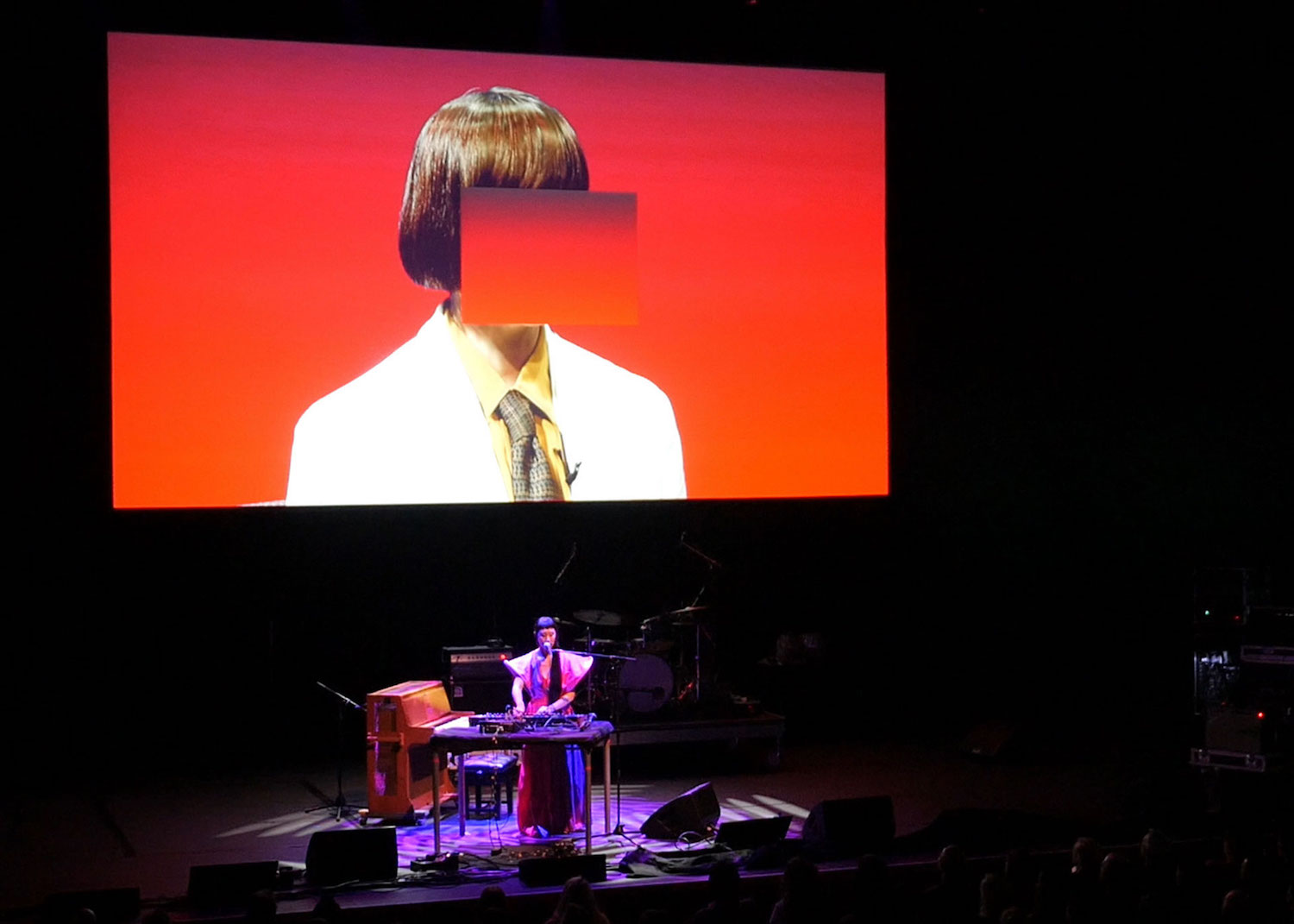
On a recent visit to the Slade MFA graduate degree show this year, the work of Rowland Hill caught my eye. Not one to specialize, Hill’s work is both inquisitive and expansive, crossing between performance, sound, moving image and text. She has initiated and curated live performance events in spaces including a hotel rooftop in Sri Lanka, an allotment in New York City, a glass atrium in Manchester, underground vaults in London, an array of domestic kitchens and one of the UK’s oldest synagogues. She is also the founder and co-director of Video Jam, an event series for which she commissions and programmes moving image works with live sound. Her latest work takes dramatic tropes and elegantly translates them into performances which are often characterized by theatrical suspense.

I really enjoyed your graduate show at the Slade a couple of weeks ago. Originally however, you studied English and Drama. How has that education influenced your practice?
I’m drawn to the cross-pollination between mediums and genres. A central concern of literature, theatre and film is the creation of narrative. Analysing its craft was inevitably part of my education, which at the time I had mixed feelings about. But, in fact, an awareness of narrative has been very important to me; it informs how I think about the shape and structure of my work. A good rule of thumb seems to be to learn the rules in order to break them. I also discovered the work of Samuel Beckett during my BA and it has been with me ever since.

In The Show, the live performer is hidden from the audience behind a gold curtain. We only see their heeled shoes, which I found very beguiling. What was the thinking behind that, and why did you restrict the audience to one or two people?
I started out thinking about the “acousmatic”—a sound that is heard without its cause or source being seen. Pierre Shaeffer adopted this term in the 1950s to talk about now-common modes of listening systematized by the radio or telephone, but I’m particularly interested in its relationship to cinema. This is something that Michel Chion writes about in his book The Voice in Cinema. By its very nature, the acousmatic voice in cinema bears an aura of invulnerability: unable to be tied down to a particular body, it exists nowhere and everywhere simultaneously. The process that cinema conventionally adopts in unveiling the source of the voice—incrementally showing fragments of body parts (a hand, a shadow, the back of a neck, feet) until the speaking face is revealed—is comparable, Chion suggests, to that of a striptease.
I was drawn to the idea of showing, partially showing and not showing, in relation to the voice, and in seeing whether I could translate a cinematic experience into a live realm. Given that this trope is most common in horror and film noir genres, there was an added layer for me when thinking about the archetypical role of women onscreen as “damsel in distress” or “femme fatale”: how does gender complicate a reading of the disembodied voice? This somehow coalesced into The Show. I should mention that the piece has two sound sources: that of the high heels, and a long audio track of breathing which was played through surround sound. Having a smaller audience meant it was more likely they could appreciate the subtlety of these sounds, and concentrate on their own feelings without distraction.

I’m intrigued by another work of yours, Slow Dramatic Ending. Why did you choose death scenes as the influence for the choreography?
The piece (created in collaboration with Jack Sheen) is an open duration performance—this version was an hour long—comprised entirely of isolated gestures from death scenes drawn from both cinema and ballet. The performers are trained dancers, and are accompanied by a large mixed ensemble performing cycles of cadences which denote ending or falling in classical music. Broadly speaking, I am very interested in visual culture and in how images become shorthands or signifiers for emotional states.
You often use archival footage or text. Could you tell me about the function of the archive as a material or process in your work?
I’m interested in how the material world and culture is formulated, acknowledged, recorded, archived, structured and standardized. I’m also interested in the limits and futilities of these efforts, and the chaos that threatens them. Almost as a by-product, my work often produces a new collection or miniature archive through the disruption of an existing one. Earlier this year I made a book composed from examples of apologias (pre-emptive defences for the author’s position) and genuinely apologetic statements from prefaces and introductions found within the collection at The Portico Library in Manchester. The book fuses dissonant authorial voices, alternately revealing pomposity, vulnerability and self-preservation, to form a single self-indulgent preface, referring continually to a text that never arrives. In making the book, I spent a lot of time on books.google.com, the largest online database of literature.
In my search I began to stumble across scanned book pages erroneously featuring the hands of anonymous operatives. It was a small shock to find a fleshy hand within what felt to be a fairly extreme place of separation—the book of a long-dead author on a remote corner of the internet. The presence of the hand rendered the invisibility of its labour visible, and I wondered whether these digital relics were accidental or the signs of an intentional yet inconspicuous protest of an uncredited and exploited workforce. From this, I made a new work entitled Gestures from the Archive. Finally, as someone working in performance, the notion of the archive necessarily has particular significance: where does the art end and the documentation begin?

I am also interested in Video Jam, the events series that you organize. What does the project do and is there any relationship you see between it and your practice?
Video Jam is an event series I founded in 2011 and co-direct with a small group of friends. The premise is to rethink how film sound operates, which we do by commissioning composers of all kinds to write original accompaniments for short, contemporary films. The process is an experiment in individual interpretation, and the results are performed live as a riff on the old silent movies. We have worked with all kinds of artists in a variety of unusual spaces, and attempt to bring together a disparate variety of genres of film and music under one roof. I see this role as part of my practice as an artist, so already there is no distinction. Thinking about the relationship between the visual and the audio is central to all of my work.





